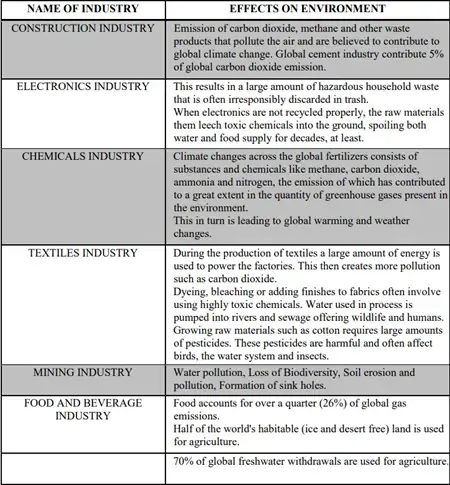How can businesses be more sustainable and environmentally friendly?

Contents
What is Sustainability in business?
An environmentally friendly business is one that successfully balances social responsibility, environmental awareness, and financial success. One that has little to no impact on the surrounding community, environment, and society.
Environmental, social, and governance (ESG) measures are increasingly being used by investors to assess an organization’s ethical effect and sustainability standards. Hence it is becoming important for businesses to be environmentally friendly due to a lot of benefits that are attached to it.
What is the most widespread misconception you have come across regarding using an environmentally friendly approach for your business?
The one that we’ve come around most of the time is how going green affects the bottom line of your business. But how true is that? Let’s see what Interface did 28 years ago.
How did this company become a certified carbon-neutral enterprise?
Interface is the first international flooring producer to sell all products as carbon neutral over their entire life cycle. Interface produces an integrated assortment of carpet tiles and resilient flooring and is now a third-party certified Carbon Neutral Enterprise. Their road towards sustainability began in 1994 when Interface intended to demonstrate that every organisation could alter itself. At the time, Interface was a company that relied heavily on oil.
In order to realise its founding vision of a business with no adverse effects on the environment, Interface identified seven main areas. Set ambitious zero-target goals in a variety of areas, expanding on that foundation, such as zero-waste-to-landfill, zero-fossil-fuel energy consumption, zero-process-water-use, and zero-greenhouse-gas emissions.
Interface has cut the amount of manufacturing waste it sends to landfill by 84% since 1996. Currently, 50% of flooring products are made from recycled or bio-based products, and 76% of the energy used for manufacturing is renewable.
The idea that putting an emphasis on sustainability has a detrimental impact on the bottom line has been debunked by Interface.
According to Interface, “The most valuable thing you can learn from the past is what to do in the future.”
Why do businesses need to be environmentally friendly?
1. Reduced costs
Small eco-friendly adjustments to your operations, purchasing, and workspace can lower expenses and boost business efficiency. Your energy usage can be decreased to ultimately conserve resources and reduce associated costs. Sustainable business practises inevitably result in cost reductions. Energ nnnnnmjikoy-saving techniques, recycling, energy-efficient machinery, solar power, and waste reduction all contribute to cost savings and have repeatedly shown to be much more efficient and economical than conventional energy consumption.
2. Improved efficiency
Do you know Google now delivers around seven times as much computing power with the same amount of electricity? Yes, with its sustainability-focused goals, Google is one of the biggest examples of improved efficiency with increased environmentally friendly approaches. Environmentally friendly approaches of any size have the potential to significantly increase corporate productivity and cut costs in the long run.
3. Environmental benefits
One of the most obvious reasons for any business to be environmentally friendly is to make a positive impact on the environment. Interface, which relied heavily on oil for its production, changed its approach in 1994 after its cathartic realization of the future. Making ecologically friendly decisions eases the strain on our world’s ecosystems and encourages more thoughtful and sustainable decision-making.
4. Financial incentives and benefits
For a business or entrepreneur looking to be more environmentally friendly, there are a variety of grants, subsidies, and financing schemes available. Schemes like the Sustainable Finance Scheme help in funding sustainable development projects in India. Recently the Kerela government announced incentives and tax redemptions for green buildings, which offer discounts on building tax, stamp duty and property tax. Keeping an eye out for such incentives will help businesses get the most out of government schemes.
5. Customer loyalty
“As our customers are seeing when they purchase iPhone 13, we’ve redesigned the packaging to eliminate the outer plastic wrap, which will allow us to avoid using 600 metric tons of plastic,” said Tim Cook, CEO of Apple.
Younger generations, particularly members of Generation Z and Millennials, have demonstrated a desire for greener products through making purchases. According to studies, companies that care about the environment attract more customers and foster long-term loyalty.

Impact of various industries on the environment. Source: https://www.researchgate.net/publication/351599623
Things to avoid while devising an environmentally friendly approach:
1. Greenwashing is a big no
Greenwashing is an unethical marketing tactic used to deceive consumers into thinking a firm is being “environmentally friendly” when in reality, it is not. It is a tactic to attract green customers.
Did you know the very famous “Fiji water” had a lawsuit against them for greenwashing the impacts by claiming that its water products are carbon negative. Click here to read this classic greenwashing case study.
With the demand for green products rising, many businesses are using greenwashing to set their goods and services apart from those of their rivals by promising to utilise power more efficiently or to be more economical over time. If you want to know more about greenwashing, click here to read our previous blog.
2. Sin of no proof
When companies fail to provide concrete evidence to support their eco-friendly claims, this is a violation. Therefore, statements regarding the environment need to be backed up with evidence from science. Businesses cannot make claims about their products being “all-natural” or “emission-free” unless they can support them. For example: claiming that the product is vegan and cruelty-free without any proof of evidence.
3. Fuzzy reporting
Fuzzy reporting is the practise of distorting the truth or trying to portray CSR corporate actions in a favourable light by using sustainability reports as a one-way communication channel.
4. Not integrating sustainability into the business model
Green production makes a substantial contribution to the Danish economy. Denmark generated DKK 174 billion (24 billion USD) worth of green goods and services in 2014. In the same year, the green sector employed 59.000 people full-time, accounting for 2.7 percent of overall employment. Any job losses in high-carbon industries have been compensated by new opportunities in green businesses.
How to be more environmentally friendly as a business?
1. Build a circular economy
Giving back the resources we took from the environment is what is meant by a circular economy. Contrarily, in a circular economy, waste generation is avoided altogether.It aims at moving away from a take-make-waste system to a take-make-circulate.
Here’s what RecoSolution does to complete the circle:
One of the change-makers team Mission Sustainability interviewed was Mr. Pranav Desai, owner of RecoSolution. The company realized how proper management of waste is difficult and needs technological support. RecoSolution helps to close the circular chain of recycling by encouraging users to buy recycled products. They make products from recycled plastic like jewellery, tables, chairs etc. and then sell it via B2B and B2C.

The figure above demonstrates how recycling, repair, remanufacturing, and reuse keep the circular economy in place. The right side of the diagram demonstrates the technical cycle which is the most helpful one when it comes to following a circular economy in business models. It emphasizes that inner loops like sharing, sustaining, and reusing ought to be given priority over outside loops that involve the product being broken down and recreated. As they utilise products and resources already on the market rather than spending in their creation, these loops also represent cost savings for consumers and corporations.
2. Reflecting on your business practices.
After learning about the macros of how to make your business more environmentally friendly, let’s dive into some details. The first technical step towards revamping your business is reflecting upon your business practices.
Firstly, the team needs to have a report of the current practices of the business. This involves understanding what is the impact made by the practices, what is the carbon footprint of the business and the areas that need improvement. This also involves bringing your team to the same page and discussing the idea of sustainability with them.
The business needs to evaluate the impact they are creating on the environment, society, community and economy. The next step in evaluation is making goals.
This involves devising short-term and long-term goals which will help make the business more environmentally friendly.
3. Source your capital resources carefully
Capital resources include the machinery, tools or other basic material required to produce goods and provide services. Correctly sourcing your capital resources is very necessary as they stay for a long time in the business. This involves choosing energy-efficient technology and machinery or sourcing your materials from environmentally friendly vendors. The focus should be on making sustainable and environmentally friendly choices right from the beginning to avoid switching costs later on.
4. Incorporate renewable energy
When compared to carbon fuels, employing renewable and alternative energy sources like wind, solar, and hydropower results in a smaller carbon footprint. Utilizing solar energy for electricity or electric vehicles instead of gasoline-powered vehicles would not only benefit the environment but also reduce costs for your company.
5. Involve energy management systems
Involving energy management systems in your organization can work like a back hand in taking you one step closer to your environmentally friendly goals. This involves making small changes like:
- Switching old appliances with energy-efficient ones
- Using more natural light
- Using rainwater
- Switching plastic cutlery with reusable ones
- Planting more trees
- Incentivizing the use of public transport, carpooling or electric vehicles
- Following reduce, reuse, repurpose and recycling practices in business operations
6. Partner with sustainable companies
Engaging with environmentally friendly businesses is a fantastic approach to helping the environment. Many companies set goals for collaborations right at the beginning. It’s critical to identify the companies that are having a beneficial effect on the environment so that one can value and support their efforts while creating beneficial collaborations.
7. Take action and measure results
Lastly, the only way forward is to take action. It is crucial to take actions with regard to the goals which were set by the business. The goals which are measurable should be quantified and controlled to guarantee that your goals, purpose, and performance are still in line. Finally, leverage your position as a business to influence change and educate your clientele about your commitment to sustainability. Share your expertise and inspire others to participate.
Some environmentally friendly companies out there
If you’re still unsure about the steps you need to take to make your business environmentally friendly, we have a hack for you. The hack is to get involved. Yes, engaging is a key to advance toward your sustainability goals is the simplest thing you can do. This entails engaging with your workforce, engaging with your community, and engaging with other businesses that have similar objectives.
We’re sure you have heard about these big companies. But do you know how are they working towards being environmentally friendly?
- Apple: Did you know that Apple intends to eliminate plastics from its packaging by 2025? This is stated in the company’s environmental progress report. Furthermore, all recognised final assembly facilities have received certification for zero waste. In addition, Apple only employs recyclable and biodegradable materials in the production of its goods and packaging. These are some of the steps they have taken to make their company more environmentally friendly.
To know more, check out Apple’s environmental progress report here.
- Nike: Yeah, you heard it right. Even though majority of Nike’s products are made out of cotton and polyester, this company is making its way through being environmentally friendly. Due to increased usage of recycled polyester and the substitution of conventional cotton with more environmentally friendly options, NIKE’s use of environmentally friendly materials in garments increased from 41% to 59% in FY20. Through a variety of programmes, Nike made an effort in FY20 to use only renewable energy in all of its owned and operated locations. Through its immediate impact and the far bigger footprint of its supply chain, NIKE continues to promote the use of renewable energy. Click here to read Nike’s responsibility report.
- IKEA: In absolute terms, and as compared to baseline FY16, the total IKEA climate footprint reduced by 1.6 million tonnes of CO2 eq in FY21, a decrease of 5.8%. With the help of numerous short- and medium-term initiatives, Ikea has reduced emissions by one-third. They also have plans in place to handle their longer-term moves and lingering difficult issues, such the environmental impact of the materials used in the IKEA range. Additionally, all IKEA-owned factories across the world now only utilise renewable electricity, thanks to Ikea’s achievement of 100% of their renewable energy use targets. Click here to read IKEA’s sustainability report to know more.
Environmentally friendly businesses around you
Are you looking to get involved some of the environmentally friendly businesses? Don’t worry, we’ve got you covered. Team Mission Sustainability has curated India’s largest sustainability repository where you can find hundreds of environmentally friendly and sustainable businesses to get in touch with. Yes, and it’s also free for now. Check out the repository here to scale up your business sustainably.
If you tapped in on the repository, then congratulations! You’ve made your first step towards making your business environmentally friendly. Only a few more steps to go towards making your business beneficial for all around you.



